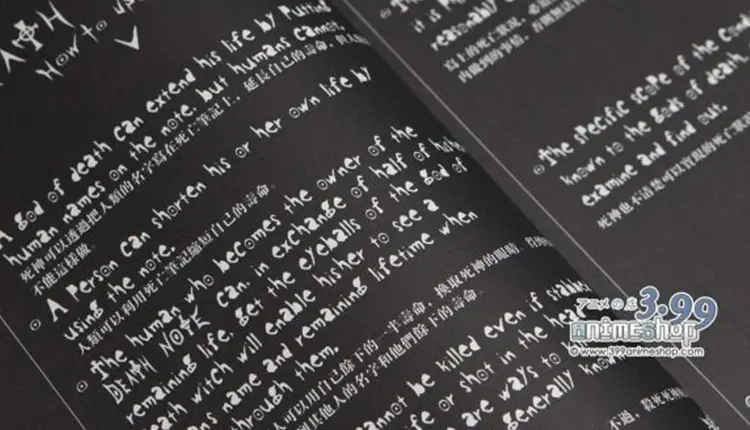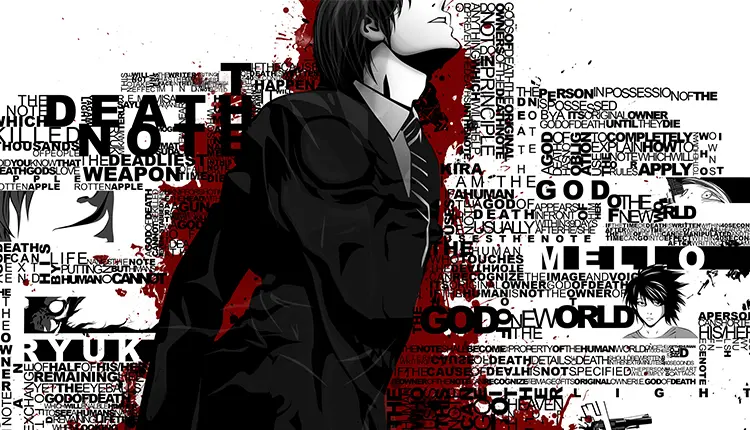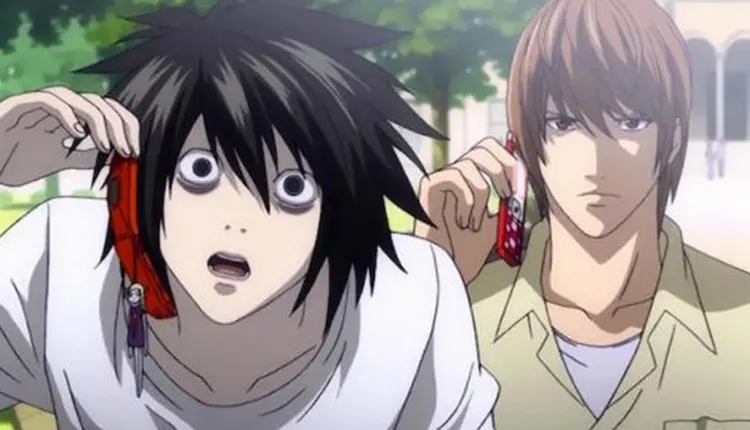For Millennials. By Millennials.
The word anime — pronounced “ah-knee-may” — is an abbreviation of the word animation. In Japan, the word refers to all forms of animation. However, outside of Japan, it has become the catch-all term for animation from Japan.
Death Note was released on October 3, 2006, and continued to air until June 26, 2007, ending with 37 episodes.
This is one of the few anime that is not too long, not too shabby, but a work of art, and if you are looking to begin diving into the anime world, this anime has your back.
Related: Sad Anime Movies To Watch
Why should you watch it?

The title is already captivating enough is enough to get your skin tingling. The story follows a prodigious teenager: Light Yagami, a high school student who stumbles across a mysterious otherworldly notebook: the “Death Note,” which belongs to the Shinigami (otherwise known as Death God) Ryuk and grants its user the power to kill anyone whose name and face he knows. The series centers around Light’s (who, after quite a lot of murders, is now notoriously known as Kira) subsequent attempts to use the Death Note to change the world into a utopian society without crime and the subsequent efforts of a special task force led by L, a reclusive international criminal profiler, to apprehend him and end his reign of terror.
This series presents the viewer with questions such as “What would I do if I had that power?” The way it is developed brings more questions yet and defies our morals. The anime might seem like something out of a fantasy tale, but it goes on to show such dark sides of humans that we fear to comprehend.
The simple yet secret ingredient that’s so mesmerizing about this story is that it keeps you on full alert. You never know what is going to happen next. Let me explain that to you in a wee bit more detail.
What’s so special about it?

First, it makes you question Lights ethics and morality. “Is it right to be the judge and executor simultaneously?” “Don’t the circumstances of each crime matter as well, and if it is right to judge without knowing all the facts?” “Can we change the criminals for the better?” “In a world where people don’t commit crimes because they’re afraid of desirable? Isn’t what Light aims to achieve theoretically similar to a dictatorship?” These are just some questions that go through one’s mind as one watches this show.
Second, it keeps you guessing what might happen next. The future is so unclear that you can barely join all the dots and predict what might happen next. Following Light’s and L’s lines of thought is challenging and entertaining. Their move will not only surprise you, but you’ll keep trying to guess what they’re going to do next; this show will keep you on the edge of your seat throughout its entirety.
Third, it changes how you perceive the world and its people. With each kill and each action Light takes, one can’t help but wonder: “It may be wrong, but what would I do if I were in his place?” People change, but the situations make them change; remember that.
Any Problems?
The only problem, if there could be one, with the story would be the second half: Near isn’t nearly as intelligent as L, and Light seems to make rather pointless decisions, unlike before when he retained control of the situation. The fact that the resolution didn’t steam from Light’s mistakes but from someone else’s and was pure luck on Near’s part was both a savory twist and an underwhelming bite, for neither of them was the central piece that ended the puzzle.
Characters, Art, Sound, Development

Generally, the character designs are both unique and somewhat similar to reality. The backgrounds are detailed enough, and the animation is excellent. The action seems to be a little exaggerated, yes, but nevertheless, pretty good.
But the art really shines in the hues chosen for the anime. The dark and dull tones complement and exceptionally fit the anime.
Moving on to the sound. First, let’s talk about the openings and endings. The 1st opening and the 1st ending are both by the band “Nightmare,” and the 2nd is by “Maximum the Hormone.” (Some people may find the heavy metal sound of the last opening and respective ending quite unpleasant.)
Moreover, the opera-like songs that pass in the episodes add to the overall effect of the scenes and are, with the somewhat religious tunes, the best choice to set the mood and get the atmosphere going.
On a side note, there was no one with fantasy-like characteristics. They all seemed like real people with real problems. No unneeded and exaggerated tragedies but no lovely lives, which is quite realistic as all lives are bittersweet.
Character Development: Light
Character development is nonexistent for most of the cast, but it doesn’t need to be there, one prime example being Light Yagami, the main character. Starting off as a genius, calm, and collected high school student with a strong sense of morals and justice, he undergoes a slow but drastic character change. The more he uses the particular book, the more he slips into a dark abyss and forgets about his morals because he finds it is what should be done to continue his work. Due to this, he ends up arrogant with no consideration for the people around him. He starts trying to create a new and better world for people to live in but ends up obsessed with the power the Death Note gives him, aiming to be the “God of the New World.”
It was also a delightful turn of events in the Anime when Light loses his memories about the Death Note. He turns back to his old self: he refuses to use people as tools (what he had been doing for quite a while as Kira), and he even goes as far as to think that Kira is wrong and wants to arrest him. At that point in the anime, we all knew Kira’s actions were going too far, so it was a delicacy to see that Light thought so. The only problem lies in the fact that Light WAS Kira. This led to many other questions: What if the notebook was actual? What if I had picked it up? Wouldn’t I do the same and end up like that?
Character Development: L
Moving on to L. He may seem plain, but beware, for he is not. As established in the beginning, L is a highly ambitious genius who tries to capture Kira, risking himself a bit more in each attempt, not even caring once for his life. L, at first, seems cold and distant. Still, as the anime progresses, we are given a deeper insight into his character as we come face to face with an “L” we couldn’t have comprehended; an L who didn’t want Light to be Kira: because he had never met anyone so similar to him in his ways of thinking and he saw Light as a friend than an enemy, even though he was almost sure that Light was, in fact, Kira.
Character Development: Side Characters in the Anime
The support characters are surprisingly interesting, despite not being all that well-developed (I’m talking about the task force). At first, we had no clue who they were and how they were as people, and their development is not much noticeable, but before you even know it, you realize you already know how they feel about Kira and their line of thoughts. We are subtly introduced to their problems and internal struggles, so it all comes naturally to us.
TLDR; Death Note defies your morals and enables deep discussions with yourself and others. It truly is a great show. Totally recommended!
My rating: 9/10

